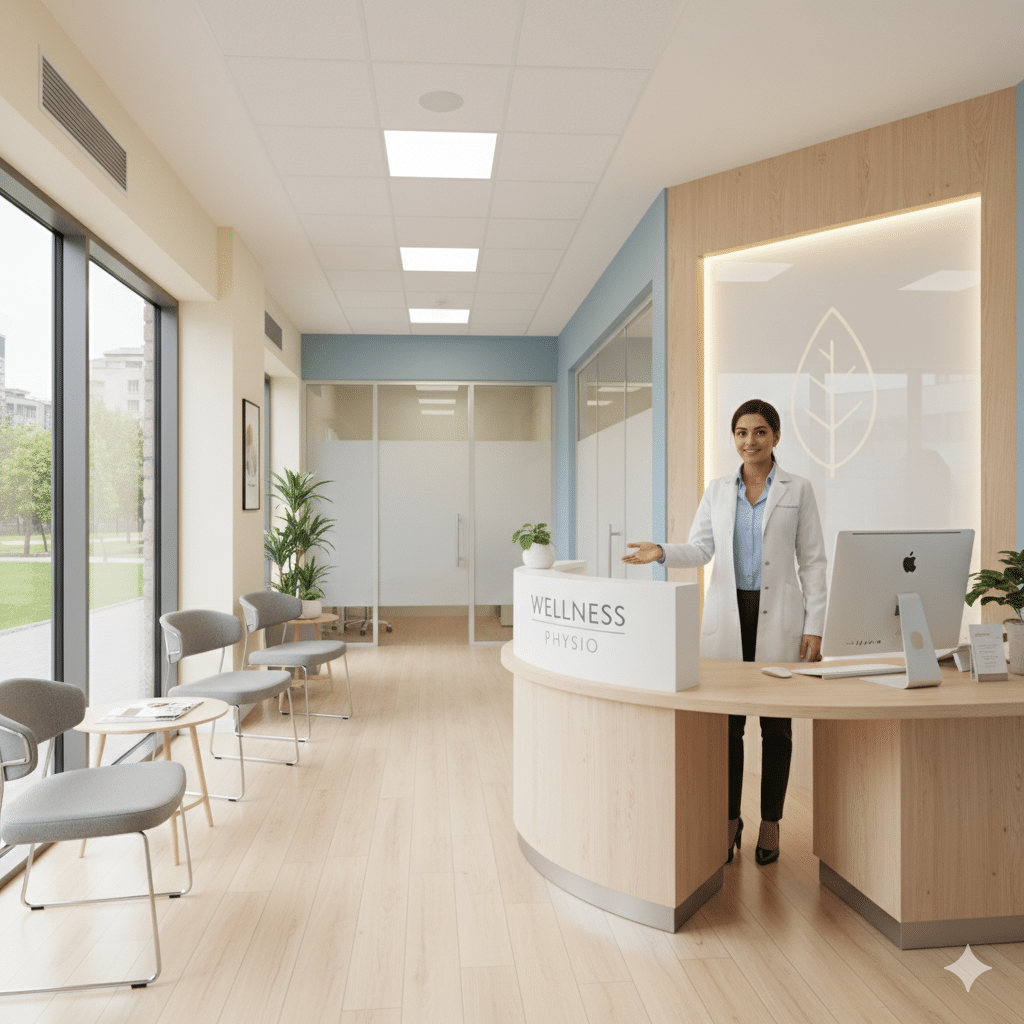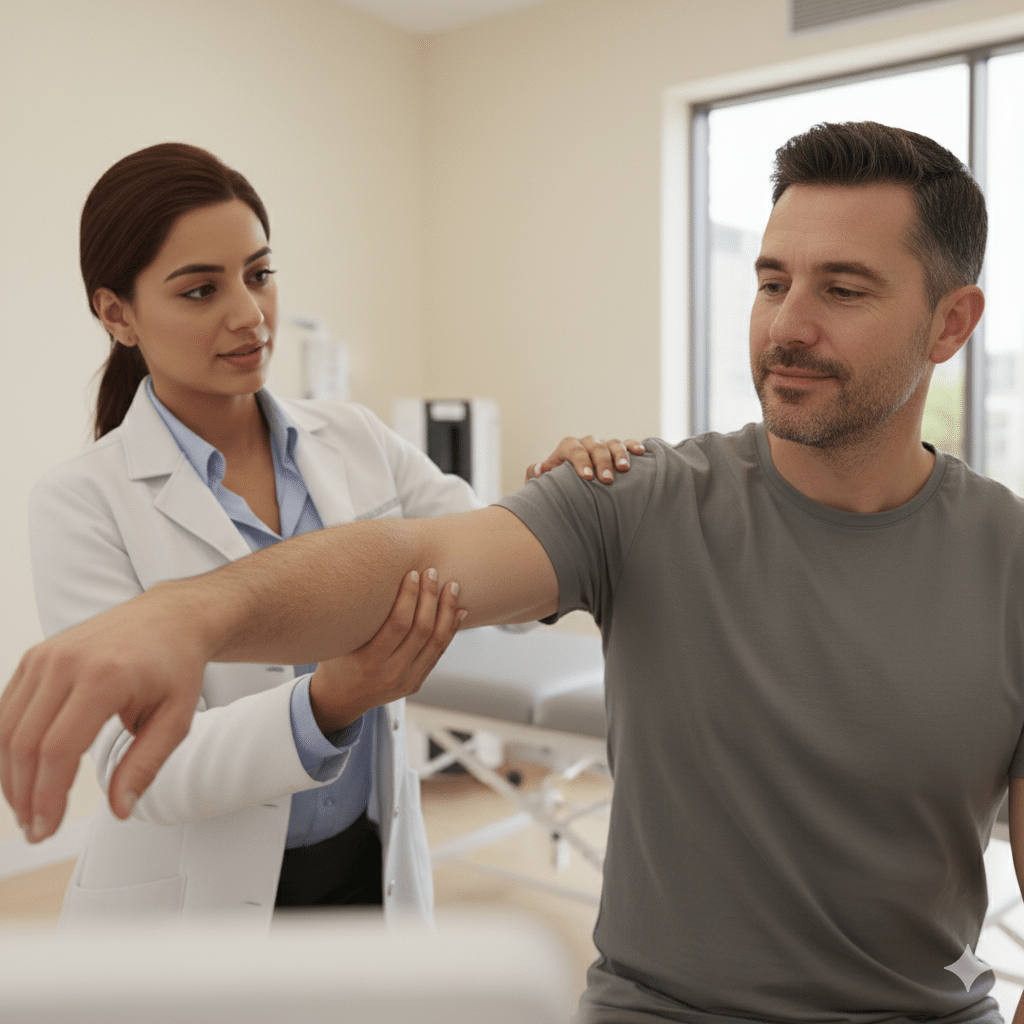Walking into any new medical appointment for the first time can be intimidating. Your mind races with questions: What are they going to do?
Will it hurt? What if they can’t figure out what’s wrong with me? What am I supposed to wear?
If you’re feeling a bit of anxiety about your first physiotherapy visit, you are not alone. This feeling of uncertainty is completely normal, and for many, it can be a barrier that stops them from getting the help they need.
We get it. That’s why we want to pull back the curtain and give you a clear, step-by-step walkthrough of a typical first physiotherapy session. Our goal is simple: to replace your uncertainty with confidence. By the time you finish reading this, you’ll know exactly what to expect, how to prepare, and why there is absolutely nothing to fear.

Stage 1: Before You Arrive – A Little Preparation Goes a Long Way
Feeling prepared can instantly reduce anxiety. Before you even leave the house, here are a couple of simple things you can do to ensure your appointment is smooth and effective.
What to Wear
This is one of the most common questions we get! The key is comfort and accessibility. We’ll need to see and assess the area that’s bothering you.
- For lower body issues (knee, hip, ankle, back): Wear comfortable shorts or loose-fitting trousers/leggings.
- For upper body issues (shoulder, neck, elbow): A tank top or a loose t-shirt is ideal.
- General Rule: Choose clothes you can move around in easily. Athleisure wear is usually a perfect choice. We have private treatment rooms, so you can always bring a change of clothes if needed.
What to Bring
Think of yourself as a detective bringing clues to help solve a case. The more information we have, the clearer the picture becomes.
- ✅ Doctor’s Referral: If you were referred by a GP or specialist, please bring the letter.
- ✅ Reports & Scans: If you have any X-ray, MRI, or ultrasound reports, bring them along. While we treat the person, not the scan, this information can be a valuable piece of the puzzle.
- ✅ List of Medications: It’s helpful for us to know about any medications you’re currently taking.
- ✅ A Mental Timeline: Try to think about your pain or injury. When did it start? What makes it feel better or worse? Was there a specific incident that caused it? You don’t need a perfect memory, but a general idea is incredibly helpful.
Stage 2: The Conversation – It All Starts With Your Story
This is, without a doubt, the most important part of your first visit.
Forget any ideas about being immediately put on a machine or told to do a bunch of exercises. The very first thing we will do is sit down with you, make you feel comfortable, and listen. This part of the session is called the Subjective Assessment, and it’s where you get to tell your story in your own words.
We’ll guide the conversation with questions like:
- “Tell me about what’s been bothering you.”
- “When and how did this start?”
- “Can you describe the pain? Is it sharp, dull, aching, burning?”
- “What activities make it worse? What, if anything, makes it feel better?”
- “What are your goals? What do you want to get back to doing?”
Why we do this: Your story provides us with up to 80% of the information we need to form an accurate diagnosis. This conversation isn’t just a formality; it’s the foundation upon which your entire treatment plan is built. We’re listening for clues that help us understand the root cause of the issue, not just the symptoms.

Stage 3: The Physical Exam – Gathering the Data
Once we have a good understanding of your history, we’ll move on to the Objective Assessment. This is the hands-on portion where we gather physical data to confirm our hypothesis from the conversation.
This is not a painful endurance test! It’s a collaborative process, and you are always in control. We will communicate clearly what we are about to do and will always work within your comfort level. The exam typically includes:
- Observation: We may look at your posture or the way you stand and walk.
- Movement Analysis: We’ll ask you to perform some simple movements, like bending forward, reaching overhead, or squatting down, to assess your range of motion and the quality of your movement.
- Hands-On Assessment (Palpation): We will use our hands to gently feel the muscles, ligaments, and joints around the area. This helps us identify specific points of tenderness, swelling, muscle tightness, or stiffness.
- Strength & Flexibility Tests: We will gently test the strength and flexibility of the relevant muscles to identify any imbalances or weaknesses.
The most important thing to remember is that this is a “do with” process, not a “do to” process. Your feedback throughout is essential.

Stage 4: The Diagnosis & Your Game Plan
Now it’s time to connect the dots. We’ll sit down with you again and explain our findings in simple, easy-to-understand language. No confusing medical jargon. We’ll tell you:
- What we believe the problem is (The Diagnosis): The “what.”
- Why it’s likely happening (The Root Cause): The “why.”
- How we’re going to work together to fix it (The Treatment Plan): The “how.”
This is a collaborative discussion. We’ll talk about your goals and create a treatment plan that makes sense for you and your lifestyle. We’ll also give you a realistic idea of the recovery timeline. You will leave this session with a clear understanding of your condition and a concrete plan for moving forward.
Stage 5: Your First Treatment & Take-Home Tools
Your first visit isn’t just an assessment; it’s the first step in your recovery. In nearly all cases, you will receive some form of treatment during this initial session to help manage your symptoms and kickstart the healing process. This might include:
- Manual Therapy: Hands-on techniques to improve joint mobility or release muscle tension.
- Education: Advice on how to modify your activities to avoid aggravating the issue.
- A Home Exercise Program (HEP): You will leave with 1-3 simple, targeted exercises. These are your “homework” and are essential for reinforcing the progress we make in the clinic.
Your Journey Starts Here
The path to feeling better isn’t mysterious or frightening. It’s a logical, collaborative process built on listening, understanding, and expert guidance. The biggest barrier is often the fear of that first step, but now that you know what to expect, that barrier is gone.
Your journey to feeling better starts with a simple conversation. There’s nothing to fear.
Take the first step and book your initial assessment at Physiogain today. We’re ready to listen.